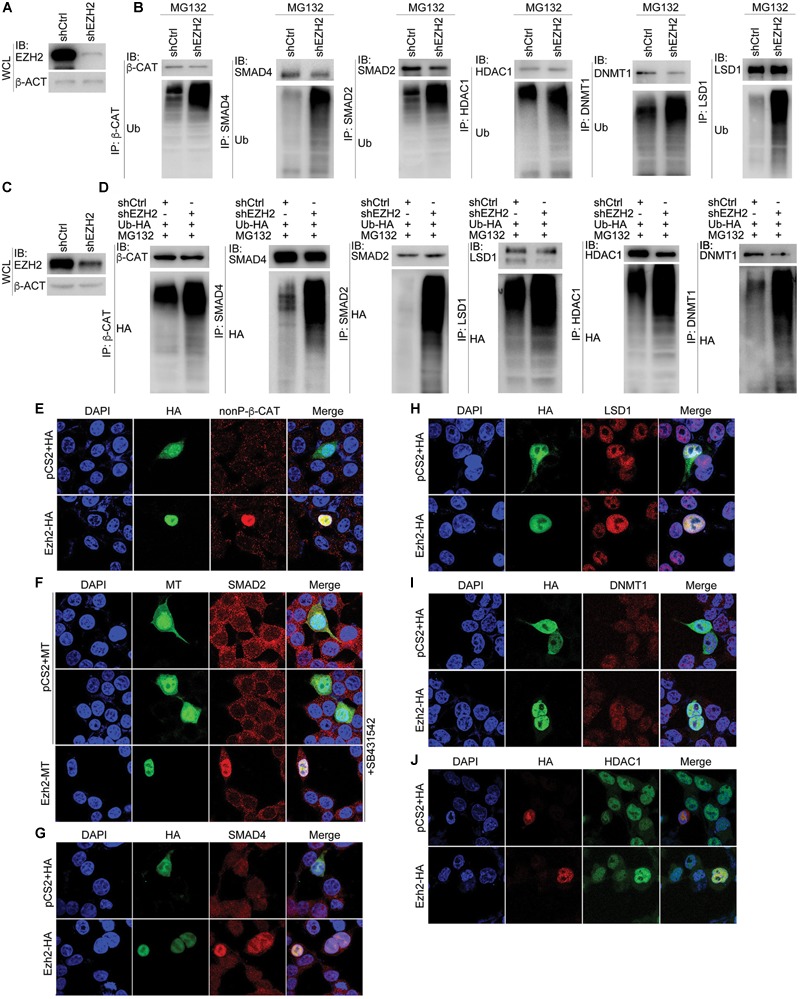FIGURE 7.

Manipulation of EZH2 level in cells influences ubiquitination and expression of its interaction partners. (A,B) In SW480 cells, knockdown of EZH2 increased ubiquitination level on immunoprecipitated proteins (IP) with their respective antibodies. (A) shows EZH2 knockdown efficiency in the cells. WCL, whole cell lysate. (C,D) In HepG2 cells with ubiquitin overexpression (Ub-HA), EZH2 knockdown increased the level of ubiquitination on proteins that were immunoprecipitated (IP) with antibodies. (C) displays EZH2 knockdown efficiency in the cells. WCL: whole cell lysate. (E–J) EZH2 overexpression enhances protein level. (E) Immunofluorescence (IF) detection of the influence of overexpression of HA-tagged Ezh2 (Ezh2-HA) on expression of nuclear form of ?-CATENIN (nonP-β-CAT). (F) IF detection of the effect of overexpression of myc-tagged Ezh2 (Ezh2-MT) on expression of SMAD2 in cells treated with SB431542. (G–J) IF detection of the effect of Ezh2-HA overexpression on the expression of SMAD4 (G), LSD1 (H), DNMT1 (I), and HDAC1 (J). In each experiment in (E–J), cells transfected with vector plasmid containing only the HA (pCS2+HA) or myc tags (pCS2+MT) were used as controls. Cell nuclei were visualized with DAPI staining.
